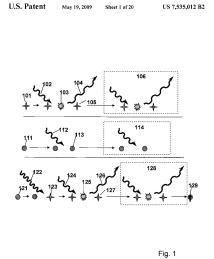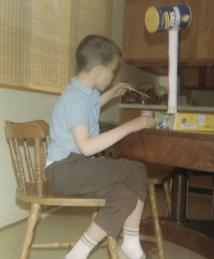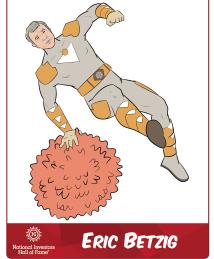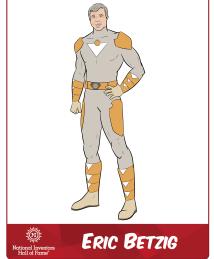Eric Betzig
"One of humanity's greatest survival traits is burnt-in curiosity, and so you want an outlet for that curiosity."
Eric Betzig and Harald Hess co-invented a super-resolution imaging technology called photoactivated localization microscopy (PALM), which allows biologists to look inside cells with unprecedented resolution. Through imaging at the nanoscale, biological structures, processes and diseases can be studied with greater clarity.
Born in 1960, Betzig grew up in Ann Arbor, Michigan, and learned the value of a strong work ethic early in life. “I learned a lot of things from my dad, but the No. 1 was the value of hard work,” Betzig said in an interview with the National Inventors Hall of Fame®. Betzig spent many Sunday mornings exploring the machine shop where his father worked. This is also where he taught himself to program at the age of 12.
Betzig studied physics at the California Institute of Technology, where he earned a bachelor’s degree in 1983. At Cornell University, he earned his master’s degree and doctorate degrees in applied physics in 1985 and 1988, respectively. He then began working for Bell Labs in 1988.
It was at Bell Labs that Betzig began collaborating with his friend and fellow National Inventors Hall of Fame Inductee, Harald Hess. Hess studied quantum phenomena at cryogenic temperatures with new scanned probe microscopes he developed, while Betzig pursued super-resolution optics by scanning a subwavelength-sized illuminated hole across a specimen. Combining their technologies, they discovered that they could resolve individual light emitters in a semiconductor at even higher resolution than this hole size, identifying them by subtle differences in their colors made apparent at the extremely cold temperatures in Hess’s cryostat.
As he met challenges in pursuing his goals in microscopy, Betzig left Bell Labs in 1994 and joined Ann Arbor Machine Co., a machine tool business founded by his father, where he served as vice president of research and development until 2002. Eventually, Betzig “missed the basic curiosity of being in the lab,” so he decided to revive his creative collaboration with Hess.
On a trip to Florida in 2005, the pair learned of a new class of fluorescent molecules that could be turned on, or “photoactivated,” at will. Immediately they realized the connection to their earlier experiment – time could replace color and, as a bonus, at ambient temperature. Thus, by repeatedly activating different sparse subset of such molecules in a biological specimen and “localizing” the position of each to subwavelength accuracy, they could eventually build an image of the specimen at ten times higher resolution than conventional microscopes. Investing $25,000 each and working feverishly in Hess’ living room, they built their revolutionary prototype in just two months.
Thanks to its simplicity and power, their technique caught on rapidly, and is used routinely today to study minute subcellular structures and nanoscale molecular motion in cells.
In 2014, in recognition of his foundational work in making single molecule localization microscopy possible Betzig shared the 2014 Nobel Prize in Chemistry with William E. Moerner and Stefan Hell for “super-resolved fluorescence microscopy.”
Betzig, who holds 42 U.S. patents, currently serves as a professor of molecular and cell biology and experimental physics and Howard Hughes Medical Institute investigator at the University of California, Berkeley. He is also a co-founder and scientific adviser of Eikon Therapeutics.
There are many more challenges, and even new fields, Betzig is interested in exploring. “I feel like there are bigger, more important questions that need to be addressed, and even though I know nothing about those fields, at least I have the freedom, thanks to my success, to be able to explore them,” said Betzig. “I don't expect to change the world myself, but I hope to at least be one of the troops on the front line.”




